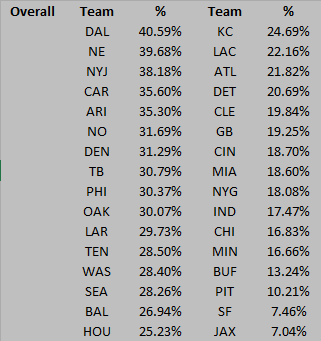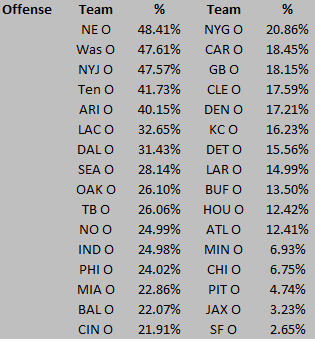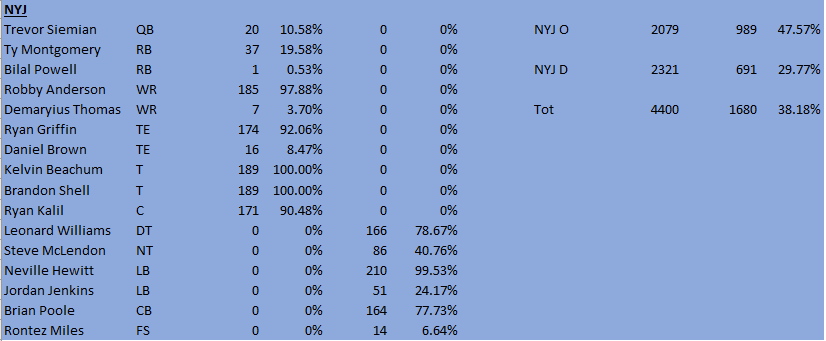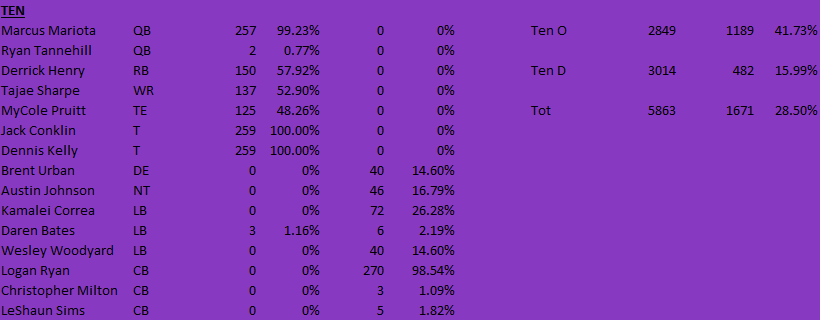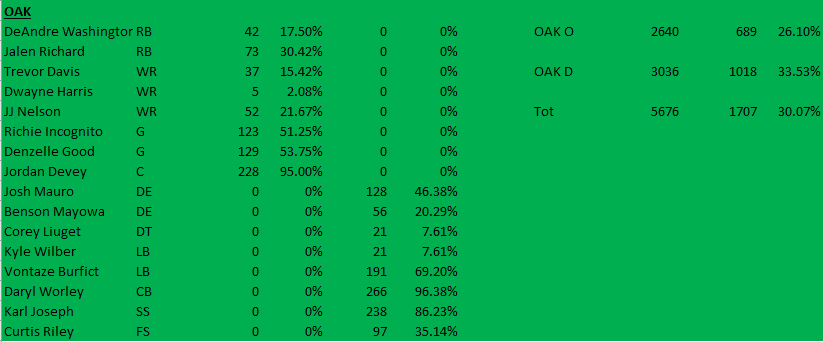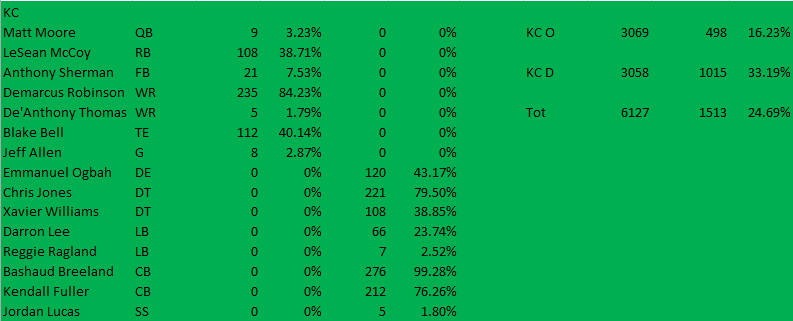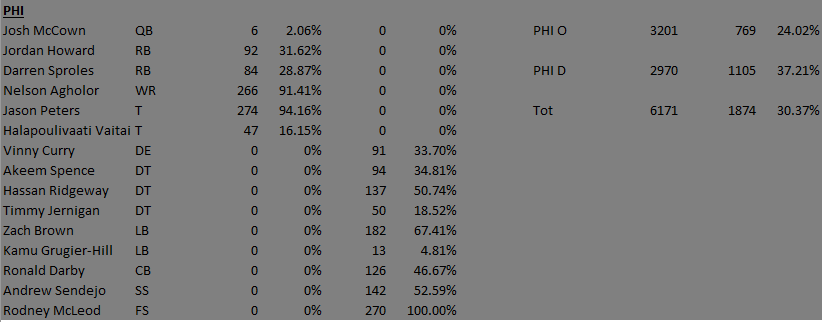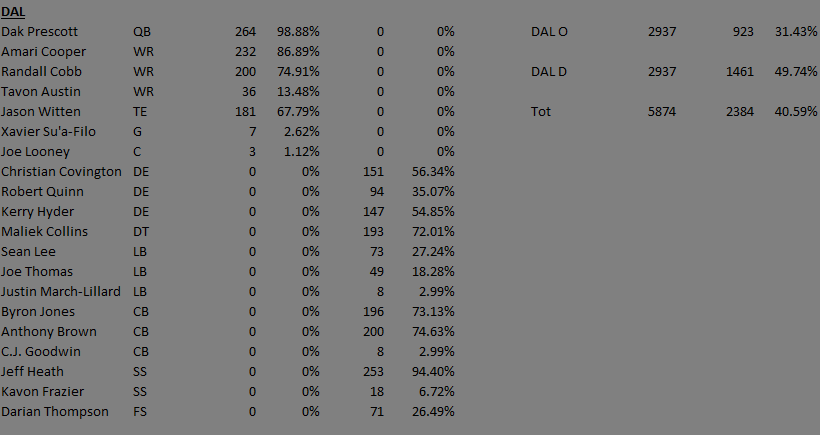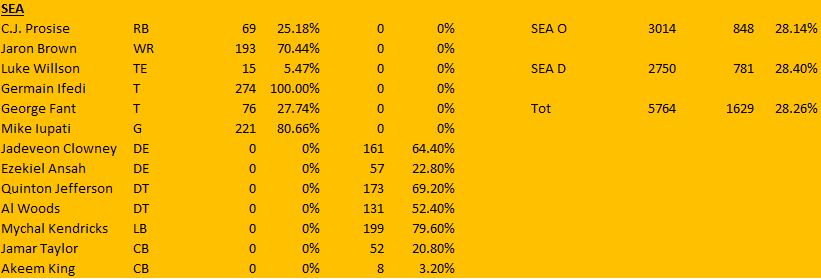Follow me on Twitter @BradOTC
We are now halfway through the 2019 NFL season and the trade deadline is officially in the rear view mirror. Most rosters are pretty set at this point, though there will of course always be minor roster shuffling throughout the season.
I wanted to update the previous snaps article (read here) and add some new data into the fold.
Using the new OTC Valuation Metric, I compiled the Current APYs of each team’s UFAs. Next, I have the Positional Value for each player as determined by the new OTC Valuation Metric. Finally, there is the Value Over Current APY.
I wanted to add our new valuation component because, as I mentioned in the original article, not all snaps are created equal. The valuation metric puts a dollar amount on the players that are headed out the door after 2019. We can see which teams are paying more than they need to for certain players based on their production halfway through the season, and if they shouldn’t be too worried about replacing them in free agency at the right price. On the flip side, we can see which teams are getting quality production out of a currently cheap asset that will soon cost much more. The proprietary OTC Valuation metric was created by OTC in partnership with Pro Football Focus).
First, here are updated tables for offense, defense and overall snaps attributed to 2020 UFAs for each team (% Change from Weeks 1-4):

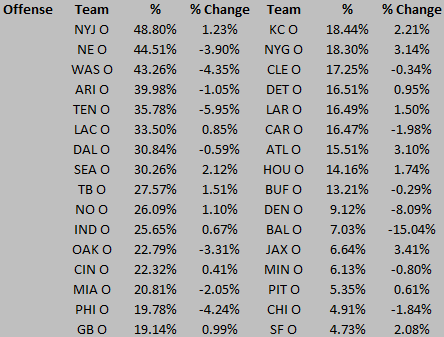
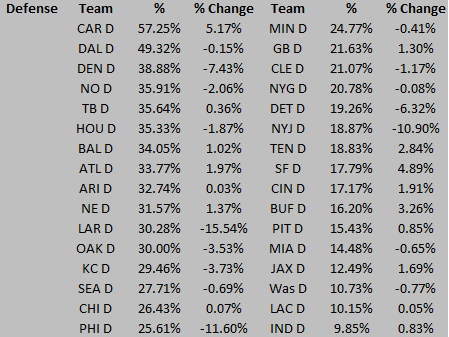
Next, I broke each team’s UFAs down according to the OTC Valuation Metric following the first nine weeks of the season (there have been 135 of the 256 total NFL regular season games played thus far).
“Total Value of UFA” is the sum of all of the UFAs “Positional Values” (no special teams) through nine weeks of the regular season.
“Current APY of UFA” is the sum of the current average per year of each of the UFAs contracts.
“Value Over APY of UFA” is the Total Value of UFA less the Current APY of UFA
A positive Value Over APY means the team is currently paying less (on a per-year basis) to their pending 2020 UFAs than our OTC Valuation Metric believes the players are worth (based on their play in the current season). These are players that are contributing quality snaps at their position and the team may look to re-sign.
A negative Value Over APY means the team is currently paying more (per-year) to their pending 2020 UFAs than our OTC Valuation Metric believes the players are worth (based on 2019 production). These are players that are contributing snaps, but not to the caliber of their contract, or those who have been unable to register many snaps to generate value.
To put the team tables (below) into perspective, first here are some leaguewide numbers for Value Over APY (“Overall,” “Offense,” and “Defense” list the # of players):
Overall:

The average Value Over APY for a full NFL roster is $10,824,088, with an average of 12.28 UFAs per team.
The average Value Over APY for offenses is $4,966,000.56, with an average of 5.47 UFAs per team.
The average Value Over APY for defenses is $5,790,450.72, with an average of 6.81 UFAs per team.
Based on the OTC Valuation metric, Dallas has production from UFAs worth $44 million more than the average NFL team. They have a lot of quality players they need to re-sign. On the other end of the spectrum, Indianapolis is paying more to their pending 2020 UFAs than their production dictates they are worth, so they will probably have no issue letting some of those players walk.
Offense:
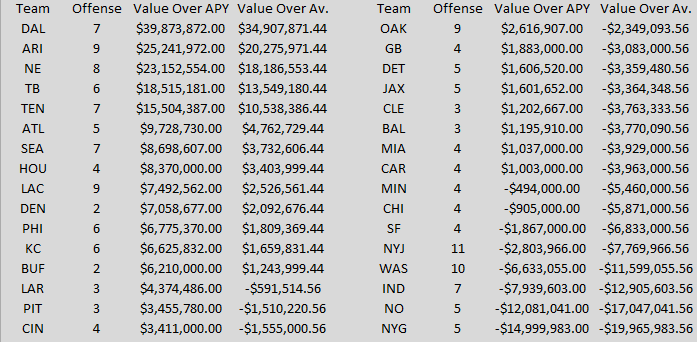
Defense:

Here is each team broken down by division. The Rows are the team overall, then the offense (# of UFAs on Offense), and the defense (# of UFAs on Defense). :








Finally, I took a look at our projected 2020 Cap Space for each team as compared to their 2020 UFA Value Over APY:

This demonstrates how much cap space would remain if the team signed all of their UFAs to contracts worth what the OTC Valuation Metric has deemed the players’ true worth. No team will do this, but it gives you a better idea of each team’s situation as they approach free agency. For example, Tampa Bay and Arizona have 16 and 19 UFAs respectively. The UFA groups on each team are outperforming their contracts by about $30 million collectively in 2019. However, Tampa Bay has $82.5 million and Arizona has $79.4 million in projected 2020 cap space. So, if they were to sign all of their UFAs to contracts in accordance with the OTC Valuation Metric, they would still have $53.4 million and $45.7 million respectively.
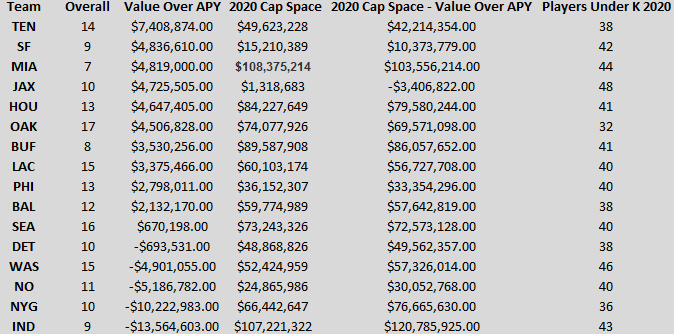
On the other hand, teams like the Giants and Colts will likely be letting the majority of their 2020 UFAs walk, and are more likely to benefit from replacing those players on the roster with others.
Follow me on Twitter @BradOTC
